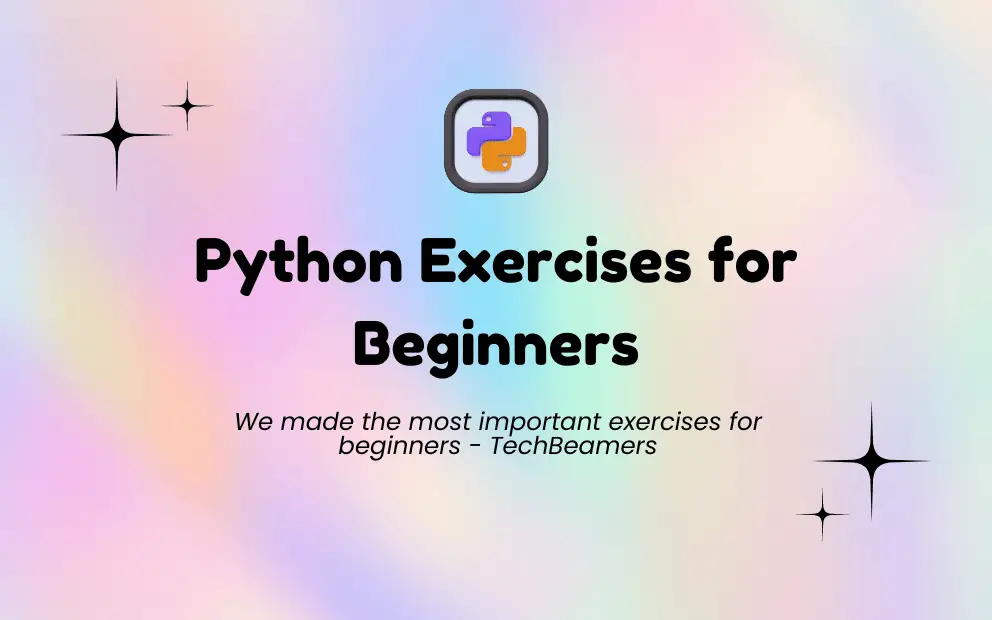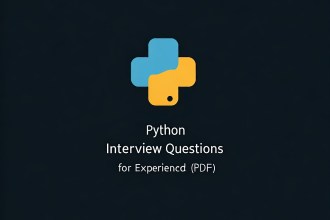Are you eager to find a job in Python? Whether you’re a recent graduate or an experienced professional, navigating the job market in the Python ecosystem can be both challenging and rewarding.
- Your Essential Guide to Find a Job in Python
- 1. Building a Strong Foundation
- 2. Utilizing Online Job Portals
- 3. Networking and Professional Associations
- 4. Freelancing and Contract Opportunities
- 5. Recruitment Agencies and Headhunters
- 6. Creating an Impressive Resume and Cover Letter
- 7. Preparing for Interviews
- 8. Negotiating Job Offers
- Summary: Find a Job in Python
Your Essential Guide to Find a Job in Python
In this extensive tutorial, we’ll explore various aspects of how to find jobs in Python, covering everything from building a strong foundation to leveraging online platforms and networking.
1. Building a Strong Foundation
Before diving into the job hunt, it’s crucial to ensure you have a robust foundation in Python programming. Employers often seek candidates with a solid understanding of the language, its libraries, and its applications. Here’s how you can strengthen your foundation:
Check Out: Learn Python Programming Step-By-Step
a. Education and Certifications
Consider acquiring relevant educational qualifications and certifications. Platforms like Coursera, edX, and Udacity offer courses and certifications in Python programming. Completing these courses not only enhances your skills but also adds credibility to your resume.
Example: Enroll in the “Python for Data Science and Machine Learning Bootcamp” on Udemy to gain practical skills. It’ll hopefully give you an edge and increase the probability of you getting a job in Python.
b. Projects and Portfolios
Build a portfolio showcasing your Python projects. Create applications, and scripts, or contribute to open-source projects. Having a portfolio demonstrates your practical skills and provides tangible evidence of your abilities.
Example: Develop a web scraper using Python to extract data from websites. Share the code on GitHub, enhancing your profile to find a job in Python.
c. Networking
Engage with the Python community. Attend meetups, conferences, and webinars to connect with professionals in the field. Online platforms like LinkedIn, Twitter, and Reddit can be valuable for networking.
Example: Join Python-specific groups on LinkedIn and participate in discussions. Share your insights, ask questions, and connect with professionals in your desired field to help you find a job in Python.
2. Utilizing Online Job Portals
Once you have a strong foundation, it’s time to explore online job portals. These platforms connect job seekers with employers, making it easier to find Python-related opportunities.
a. LinkedIn
LinkedIn is a powerful professional networking platform. Create a compelling profile highlighting your skills, experience, and projects. Follow companies you’re interested in and set job alerts for Python-related positions.
Example: Optimize your LinkedIn headline with keywords like “Python Developer” or “Data Scientist” to attract recruiters searching for Python talent and find a job in Python.
b. Indeed and Glassdoor
Platforms like Indeed and Glassdoor aggregate job listings from various sources. Use advanced search filters to narrow down Python-specific jobs. Read company reviews and gain insights into the work culture.
Example: Set up daily job alerts on Indeed with keywords such as “Python,” “Django,” or “Data Science” to receive the latest job listings directly in your inbox, enhancing your ability to find a job in Python.
Give this Simple Test: Python Data Analysis Quiz
c. Specialized Job Boards
Explore niche job boards that focus specifically on tech and programming roles. Websites like Stack Overflow Jobs, GitHub Jobs, and Python.org/job board are excellent resources for Python enthusiasts.
Example: Check the “Remote” filter on Stack Overflow Jobs if you’re interested in remote Python positions, expanding your opportunities to find a job in Python.
3. Networking and Professional Associations
Networking plays a crucial role in finding job opportunities. Building relationships with professionals in the Python community can open doors to hidden job markets and referrals.
a. Meetups and Conferences
Attend local and virtual meetups and conferences related to Python and programming. Networking at these events can lead to valuable connections and insider information about job openings.
Example: Attend PyCon or local Python meetups to meet professionals in your city or globally. Introduce yourself, exchange business cards, and follow up with LinkedIn connections after the event. It’ll increase your odds of finding a job in Python.
b. Professional Associations
Join Python-related professional associations and communities. These groups often share job postings and industry trends, and provide a platform for networking.
Example: Become a member of the Python Software Foundation (PSF) and participate in their forums. PSF members often share job opportunities and collaborate on various Python projects, contributing to your ability to find a job in Python.
c. Alumni Networks
Leverage your educational background by connecting with alumni who are now working in Python-related roles. Alumni networks can be a valuable source of job referrals and advice.
Example: Use LinkedIn’s alumni search feature to find and connect with graduates from your university working in Python roles. Send personalized messages expressing your interest in their career path, increasing your chances of finding a job in Python.
Also Read: How to Become a Machine Learning Engineer
4. Freelancing and Contract Opportunities
Freelancing and contract work are excellent ways to gain experience, build your portfolio, and make valuable connections in the industry.
a. Freelance Platforms
Websites like Upwork, Freelancer, and Toptal connect freelancers with clients worldwide. Create a profile showcasing your Python skills and bid on projects that align with your expertise.
Example: Offer Python programming services on Upwork, emphasizing your proficiency in areas like web development, data analysis, or automation, broadening your opportunities to find a job in Python.
b. Open-Source Contributions
Contribute to open-source projects on platforms like GitHub. This not only enhances your coding skills but also showcases your commitment to collaborative work.
Example: Identify active Python projects on GitHub and submit meaningful pull requests. Mention your contributions on your resume and LinkedIn profile to stand out to potential employers, showcasing your ability to find a job in Python.
c. Consulting and Training
Offer consulting services or create online courses to share your expertise. Platforms like Teachable and Udemy allow you to create and sell courses on Python-related topics.
Example: Develop a course on “Mastering Python for Data Analysis” and promote it on platforms like Udemy. This not only generates income but also establishes you as an expert in the Python community, expanding your opportunities to find a job in Python.
5. Recruitment Agencies and Headhunters
Engaging with recruitment agencies and headhunters can streamline your job search process. These professionals have access to exclusive job opportunities and can match your skills with relevant positions.
a. Submit Your Resume
Submit your resume to reputable recruitment agencies specializing in technology and programming roles. Highlight your Python skills and specify the type of roles you are interested in.
Example: Reach out to recruitment agencies like Robert Half Technology or CyberCoders and submit your resume, emphasizing your Python programming experience, and enhancing your chances to find a job in Python.
b. LinkedIn Recruiters
Connect with recruiters on LinkedIn who specialize in Python-related positions. These recruiters often share job openings and can be valuable allies in your job search.
Example: Use LinkedIn’s advanced search to find recruiters specializing in Python recruitment. Send personalized connection requests expressing your interest in relevant job opportunities. This way, you will have more opportunities to find a job in Python.
6. Creating an Impressive Resume and Cover Letter
Your resume and cover letter are your first impressions of potential employers. Craft these documents carefully to showcase your skills, experience, and passion for Python.
a. Tailor Your Resume
Customize your resume for each job application, emphasizing relevant Python skills and experience. Use quantifiable achievements to
demonstrate your impact in previous roles.
Example: Enroll in the “Python for Data Science and Machine Learning Bootcamp” on Udemy to gain practical skills. With better skills, you will have a greater chance to find a job in Python.
b. Highlight Key Projects
Create a section on your resume specifically dedicated to key Python projects. Provide details on the project scope, your role, and the impact it had on the organization.
Example: Develop a web scraper using Python to extract data from websites. Share the code on GitHub, enhancing your profile to find a job in Python.
c. Craft a Compelling Cover Letter
Write a tailored cover letter that goes beyond your resume. Share your passion for Python, why you are interested in the role, and how your skills align with the company’s needs.
Example: Express your enthusiasm for a Python development role and mention specific projects or technologies the company is using that align with your expertise, improving your chances of finding a job in Python.
7. Preparing for Interviews
Once you start receiving interview invitations, it’s crucial to prepare thoroughly. Python-related interviews may include technical assessments, coding challenges, and behavioral questions.
a. Technical Interview Practice
Brush up on your Python programming skills and be prepared for technical assessments. Platforms like LeetCode and HackerRank offer Python-specific coding challenges.
Example: Solve Python coding challenges on HackerRank to practice algorithmic problem-solving and improve your coding efficiency, preparing you to find a job in Python.
b. Behavioral Interview Preparation
Prepare for behavioral questions by reflecting on your past experiences and how they relate to the job. Use the STAR (Situation, Task, Action, Result) method to structure your responses.
Example: When asked about a challenging project, describe the situation, the task at hand, the actions you took, and the positive results, showcasing your problem-solving abilities.
Also Read: How to Answer Tell Me About Yourself in Interviews
c. Research the Company
Understand the company’s products, services, and industry. Familiarize yourself with the technologies they use, especially if they align with your Python skills.
Example: Before the interview, research the company’s website, read recent news articles, and explore their GitHub repositories to gain insights into their technology stack, preparing you to find a job in Python.
8. Negotiating Job Offers
Congratulations, you’ve landed the job! Now it’s time to negotiate the terms of your employment. Proper negotiation can ensure you receive fair compensation and benefits.
a. Research Salary Benchmarks
Research salary benchmarks for Python-related roles in your location and industry. Websites like Glassdoor and PayScale provide salary insights.
Example: Use salary research to justify your compensation expectations during negotiations. Highlight your skills and experience as contributing factors to your value, making it more likely for you to find a job in Python.
b. Consider Benefits and Perks
Negotiate beyond salary. Consider factors like health insurance, remote work options, professional development opportunities, and other perks that enhance your overall job satisfaction.
Example: If remote work is important to you, negotiate for a flexible work arrangement or the option to work remotely a few days per week, improving your overall experience as you find a job in Python.
c. Be Prepared to Compromise
Approach negotiations with a collaborative mindset. Be open to compromise and find mutually beneficial solutions. Remember that a successful negotiation results in a win-win scenario.
Example: If the company is unable to meet your salary expectations, explore alternative benefits or opportunities for performance-based bonuses, ensuring a positive outcome as you find a job in Python.
Summary: Find a Job in Python
Embarking on a job search in the Python ecosystem requires a combination of technical proficiency, networking, and strategic planning. By building a strong foundation, leveraging online platforms, networking effectively, and showcasing your skills through projects and portfolios, you can position yourself as a desirable candidate in the competitive job market.
The journey may have its challenges, but with dedication, continuous learning, and a proactive approach, you’ll be well on your way to securing a fulfilling Python-related job. Good luck on your journey to find a job in Python.
Lastly, our site needs your support to remain free. Share this post on social media (Linkedin/Facebook) if you gained some knowledge from this tutorial.
Enjoy coding,
TechBeamers.







